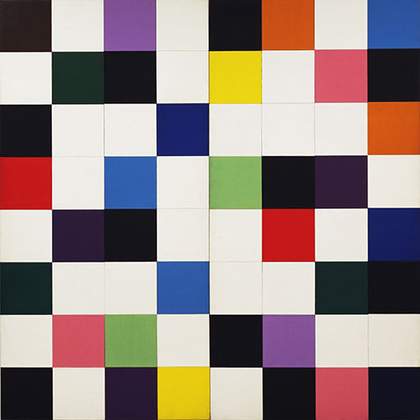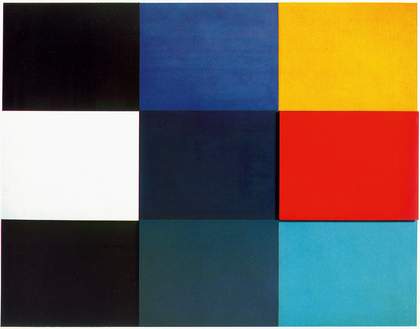Ellsworth Kelly, an American artist whose independent approach influenced hard-edge and colour field painting, examines abstraction of objects in nature using form, colour and line. Before Kelly became a pioneer of painting, though, he was a member of the 23rd Headquarters Special Troops unit, also known as the ‘Ghost Army’. Deployed in France during the Second World War, the US military tactical deception group was assembled by actor Douglas Fairbanks Jr. It consisted of about 1,100 artists, actors, musicians and others drawn from art schools (Kelly was studying in the Pratt Institute in Brooklyn at the time) and advertising agencies to design camouflage, construct fake military installations and rubber tanks, and to fabricate soundscapes – acoustic techniques also later used in the first Gulf War, when speaker systems hidden behind sand dunes were employed to influence movements on the battlefield by transmitting imaginary battle sounds.
The directive of the Ghost Army was to feed the Nazis duplicitous sounds of mass troop and artillery manoeuvres via large speakers mounted on armoured vehicles and generally to transmit disinformation about the numbers, plans and whereabouts of the allied forces.
More specifically, Kelly was part of the 603rd Camouflage Engineers within the wider unit, alongside fashion designer Bill Blass and photographer Art Kane. He was predominantly engaged in the creation of dummy (often inflatable) vehicles, airfields and troop encampments for the benefit of enemy reconnaissance aircraft and the production of camouflage. You can see in his post-war paintings such as The Meschers 1951 how he begins to adopt and adapt the techniques of conventional camouflage, before taking a leap even further into abstraction to produce the 8ft-square Colours for a Large Wall in the same year, and Méditerranée in 1952. It was at this time that Kelly began imbuing his paintings with the colours and codes relating to the sonic experiments and research carried out during the war.
Ghost Army defectors Bill Arnett, Hippolyte Morton and Walter Slepian formed AUDINT (short for Audio Intelligence) in 1945. Its current members Toby Heys, Steve Goodman and Patrick Doan have created Colorcoder, an app programmed to sonically decrypt covert messages composed by Ellsworth Kelly in Colors for a Large Wall 1951. The information embedded within the artwork relates directly to the sonic deception formulas and techniques used by the Ghost Army during the war. Each unique colour used within the painting has a palette of associated sounds that span the audible range and can be layered in various ways to create different sonic textures.
Colorcoder is available for download for Apple OSX via audint.net, see demo video below for more.


